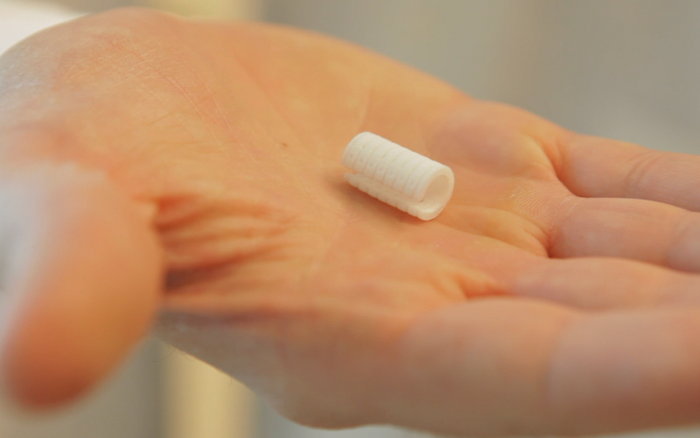3D-printed plastic splint saves baby's life
3D bioprinting recently made a dramatic move from the world of science fiction and researcher's fantasy to the real world of saving a baby's life at the University of Michigan (Ann Arbor, MI).When Kaiba Gionfriddo's life was in danger due to difficulty breathing two faculty members at the University of Michigan applied for and received emergency clearance from the Food and Drug Administration to create and implant a tracheal splint made from polycaprolactone, one of many medical plastics that qualify as biomaterials.
May 24, 2013

3D bioprinting recently made a dramatic move from the world of science fiction and researcher's fantasy to the real world of saving a baby's life at the University of Michigan (Ann Arbor, MI).
When Kaiba Gionfriddo's life was in danger due to difficulty breathing two faculty members at the University of Michigan applied for and received emergency clearance from the Food and Drug Administration to create and implant a tracheal splint made from polycaprolactone, one of many medical plastics that qualify as biomaterials.
|
The splint was sewn around Kaiba's airway to expand the bronchus and give it a skeleton to aid proper growth. In approximately three years, the splint will be reabsorbed by the body.
"It was amazing. As soon as the splint was put in, the lungs started going up and down for the first time and we knew he was going to be OK," said Glenn Green, M.D., associate professor of pediatric otolaryngology at the University of Michigan. He had been working on the bioprinting process with colleague Scott Hollister, professor of biomedical engineering and mechanical engineering and associate professor of surgery at the University of Michigan.
"The material we used is a nice choice for this. It takes about two to three years for the trachea to remodel and grow into a healthy state, and that's about how long this material will take to dissolve into the body," says Hollister.
Green and Hollister were able to make the custom-designed, custom-fabricated device using high-resolution imaging and computer-aided design. The device was created directly from a CT scan of Kaiba's trachea/bronchus, integrating an image-based computer model with laser-based 3D printing to produce the splint.
"Quite a few doctors said he had a good chance of not leaving the hospital alive," says April Gionfriddo, about her now 20-month-old son, Kaiba. "At that point, we were desperate. Anything that would work, we would take it and run with it."
Severe tracheobronchomalacia is rare. About 1 in 2200 babies are born with tracheomalacia and most children grow out of it by age 2 or 3, although it often is misdiagnosed as asthma that doesn't respond to treatment.
"Severe tracheobronchomalacia has been a condition that has bothered me for years," says Green. "I've seen children die from it. To see this device work, it's a major accomplishment and offers hope for these children."
About the Author(s)
You May Also Like



